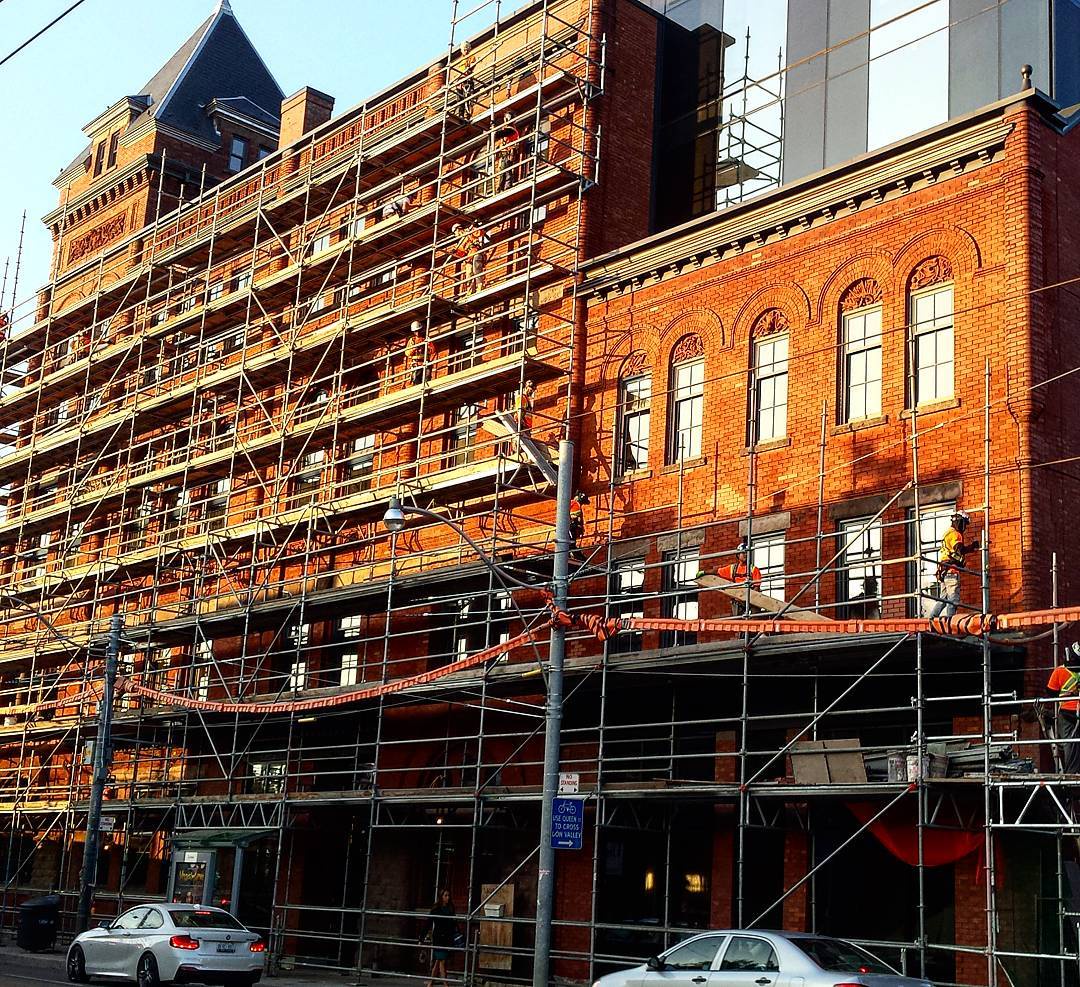Toronto, the vibrant and ever-evolving metropolis on the shores of Lake Ontario, is a city of constant growth and transformation. With its iconic skyline, bustling neighborhoods, and a thriving real estate market, construction is a cornerstone of Toronto's urban landscape. At the heart of this construction boom stands an unsung hero: scaffolding. In this article, we'll explore the indispensable role that scaffolding plays in Toronto's construction industry, providing safety, access, and support for the city's builders.
The Scaffolding Essentials
Scaffolding is a temporary structure used in construction, renovation, and maintenance projects to provide access, support, and safety for workers and materials. In Toronto's dynamic construction environment, scaffolding is a lifeline that ensures projects progress smoothly and securely. Here are some key aspects of the role scaffolding plays in the city:
- Safe Access to Heights
One of the primary functions of scaffolding is to provide safe access to elevated areas of a construction site. Toronto's skyscrapers, high-rises, and commercial buildings often require workers to access various levels, including those far above ground. Scaffolding allows workers to reach these heights securely, reducing the risk of accidents and injuries associated with climbing ladders or using less stable means of access.
- Supporting Heavy Loads
Construction projects in Toronto often involve the movement of heavy materials, equipment, and machinery. Scaffolding is designed to support substantial loads, ensuring that materials can be safely transported to different levels of the construction site. This support not only enhances efficiency but also minimizes the risk of accidents caused by the improper handling of heavy loads.
- Workspace Expansion
Scaffolding not only provides access to elevated areas but also expands the workspace for construction crews. With scaffolding in place, workers can operate efficiently at multiple levels, allowing for simultaneous tasks such as masonry, painting, and window installation. This multitasking capability accelerates project timelines and reduces downtime.
- Facade and Building Maintenance
Beyond new construction, scaffolding plays a crucial role in the maintenance and restoration of Toronto's architectural treasures. Historic buildings, modern skyscrapers, and cultural landmarks often require routine maintenance, cleaning, and repairs. Scaffolding provides safe and stable platforms for maintenance crews to access every nook and cranny of these structures, preserving their beauty and structural integrity.
- Ensuring Safety and Compliance
Safety is paramount in Toronto's construction industry, and scaffolding is a key element in ensuring a secure working environment. Properly installed and maintained scaffolding systems comply with local and national safety regulations. Regular inspections and adherence to safety standards minimize the risk of accidents, falls, and other on-site incidents.
The Evolution of Scaffolding in Toronto
Scaffolding in Toronto has come a long way from its humble beginnings as wooden platforms and ladders. Modern scaffolding systems are engineered with precision, utilizing lightweight yet sturdy materials such as aluminum and steel. These systems are modular, adjustable, and adaptable to a wide range of construction scenarios, making them highly efficient and versatile.
Moreover, innovations in scaffold design in Toronto have resulted in the development of safer and more ergonomic systems. Features such as guardrails, toe boards, and anti-slip surfaces enhance worker safety, even in challenging weather conditions that Toronto often experiences.
Scaffolding Challenges in Toronto
While scaffolding is an indispensable tool in Toronto's construction landscape, it does present some challenges. One of the primary challenges is the need for efficient assembly and disassembly, especially in densely populated urban areas where construction sites are limited in space. Quick and precise installation is crucial to avoid disruptions to traffic and pedestrians.
Another challenge is the extreme weather conditions Toronto experiences, particularly during winter. Scaffolding systems must be designed to withstand heavy snow loads and freezing temperatures while providing a safe working environment for construction crews.
Conclusion: Scaffolding, the Unsung Hero
In the ever-growing and evolving city of Toronto, scaffolding is indeed the unsung hero of the construction industry. Its role in providing safe access, support, and workspace expansion cannot be overstated. As Toronto continues to shape its skyline, renovate its historic buildings, and build its future, scaffolding will remain a vital lifeline that ensures projects progress safely and efficiently.
In a city that thrives on growth and development, the importance of scaffolding in Toronto's construction lifeline cannot be overlooked. It is a testament to the dedication to safety, innovation, and precision that drives the city's builders and ensures that Toronto remains a place of architectural marvels and progress.
Top of Form


No comments yet